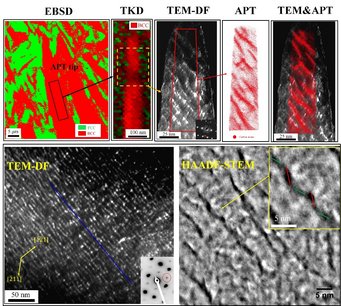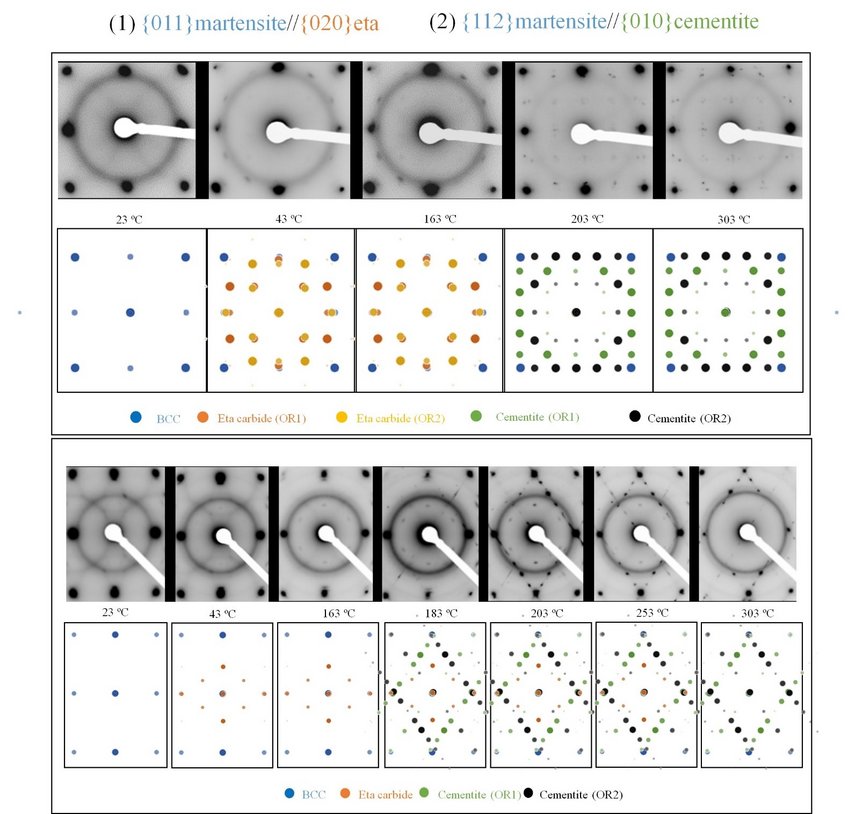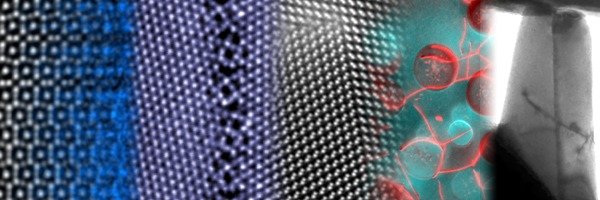
Carbon redistribution in C-supersaturated martensitic phase during room temperature aging
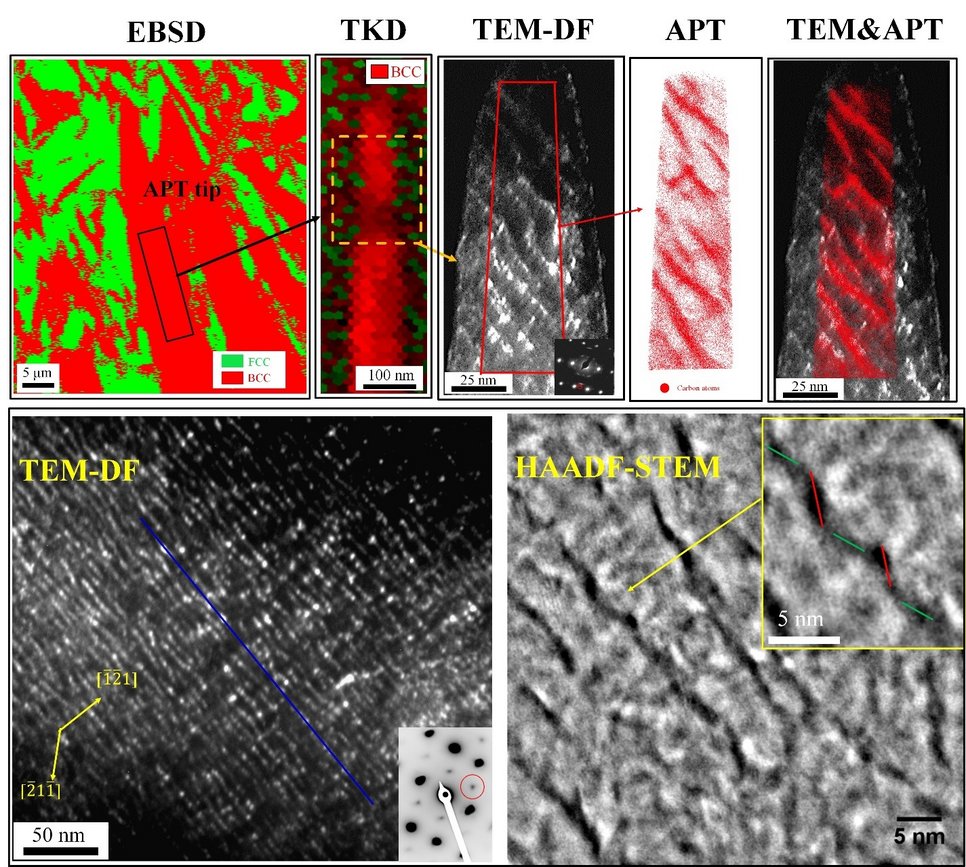
Fig. 1a) A combination of EBSD/TKD/TEM-DF/HAADF-STEM/APT measurements of a Fe-Ni-C martensitic steels after 2 years of room temperature aging.
The formation of carbon(C)-rich domains during room temperature aging of supersaturated martensite has been a matter of debate for several decades. Our investigations aim to fill the gaps in understanding of carbide formation in Fe-Ni-C lenticular martensitic steels aged at room temperature. A combination of transmission electron microscopy, atom probe tomography and in-situ experiments unravels the formation sequence of nanoscale h-Fe2C carbide. A correlative study employing TKD, TEM and APT on the same specimen of a sample aged for 2-3 years establishes that nanometer-sized, plate-shaped η-Fe2C carbides form during room temperature aging within martensite. The macroscopic habit plane of the carbides is close to {521} with a carbon content of ~27 at.%, as displayed in Fig. 1a. The orientation relationship between the η-Fe2C carbides and the parent martensite grain (α’) follows [001]α’//[001]η, (1̅10)α’//(020)η. The observation of η-Fe2C–carbide formation at room temperature is particularly interesting, as transition carbides have so far only been reported to form above 100°C. Our results also imply that even Fe atoms diffuse several nanometers in martensite during three years at room temperature in order to facilitate carbide precipitation.
To obtain a deeper insight into the formation sequence and stability of transition carbides under the influence of temperature we performed an in-situ heating experiment employing CMOS-based electron detector. Fig. 1b shows experimental and simulated electron diffraction patterns taken in two different zone axis orientations for temperatures between 23ºC and 303ºC. In the initial as-quenched state, the martensitic phase is supersaturated with carbon and no evidence for carbide formation can be found. With increasing temperature, the following formation sequence of transition carbides in martensite can be established: Martensite (23ºC) → Eta carbide (43-163ºC) → Eta carbide/cementite (183-303ºC) → Cementite (≥303ºC).
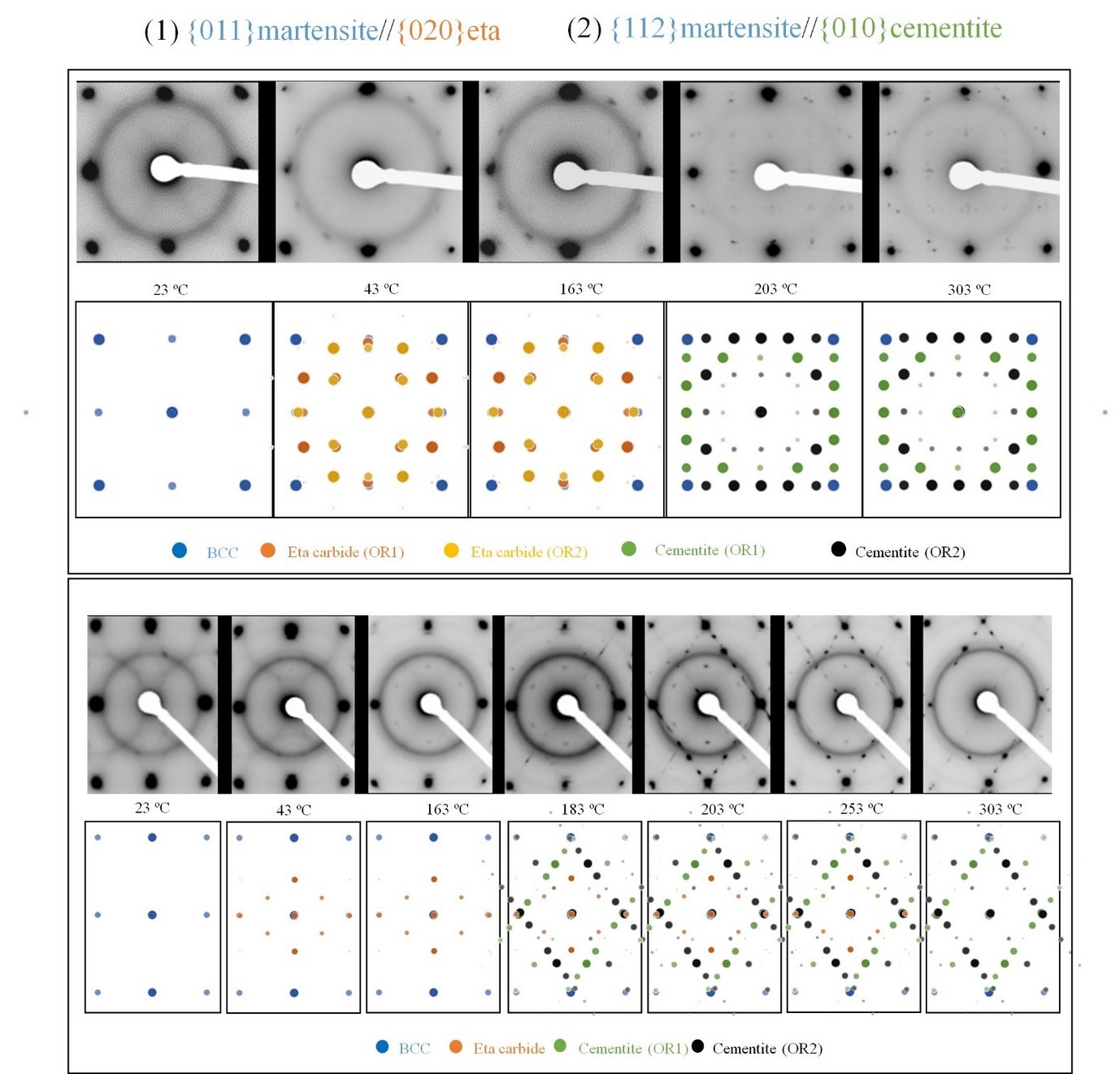
Fig.1b) In-situ studies of electron diffraction evolutions of Fe-Ni-C martensitic phase along and zone axes from 23 to 303 °C.
By using the correlative microscopies (TKD/TEM/STEM/APT), the crystallographic (e.g. superlattice reflections, habit planes, etc.) and chemical information (e.g. compositions) can be directly displayed and to identify the type of second phase (e.g. η-Fe2C carbides in Fe-Ni-C steels in current study).
